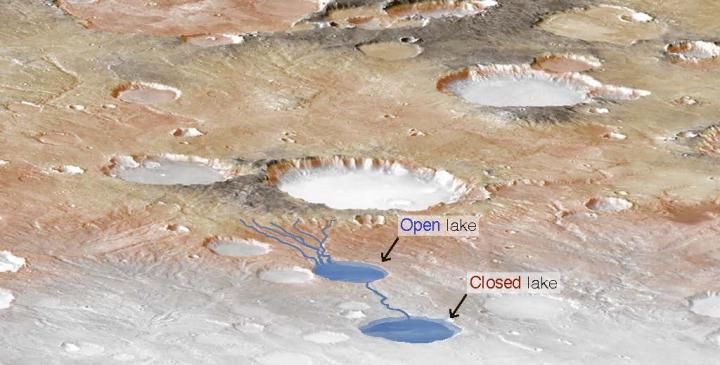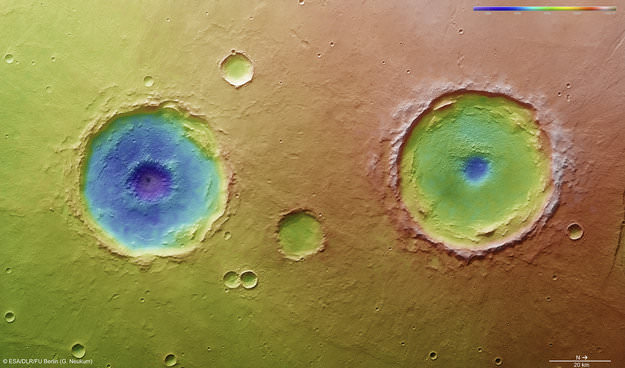Figuring out the ancient climate on Mars has been tricky. While evidence gathered from orbit and on the surface seems to indicate there must have been a lot more water on Mars early in its history, questions remain on how much water and in what form.
A new study has now quantified the amount of precipitation needed to create many of the landforms visible today on Mars surface. The paper, published in the journal Geology says there was enough rainfall and snowmelt to fill lakebeds and river valleys 3.5 to 4 billion years ago on the Red Planet, and that precip must have occurred worldwide.
Researchers from the University of Texas at Austin found that precipitation must have been between 13 and 520 feet (4 to 159 meters) in a single episode to fill the lakes and, in some cases, provide enough water to overflow and breach the lake basins. While that’s quite a large range of precipitation, the researchers said it helps narrow the gap in understanding which Mars’ climate models are most accurate.
“It’s a huge cognitive dissonance,” said lead author Gaia Stucky de Quay, a postdoctoral fellow at UT’s Jackson School of Geosciences. “Climate models have trouble accounting for that amount of liquid water at that time. It’s like, liquid water is not possible, but it happened. This is the knowledge gap that our work is trying to fill in.”
More than 3.5 billion years ago, it is thought that Mars had a thick enough atmosphere for water to flow on its surface. Orbital pictures show vast river plains and possible ocean “shorelines.” Many of the Mars landers and rovers have found evidence of water-soaked rocks on the surface (such as hematite or clay). A persistant, outstanding question of Mars’ past is, if there was water, how long did it endure? If there was rainfall, how long did the rainfall or snowmelt last? Various studies argue just days, a few years or thousands of years.
And other research has indicated that many of the landforms and clays on Mars could possibly form without the presence of water. And scientists are still trying to understand that if Mars had a thick atmosphere in the past, why did it dissipate to the current thin blanket of air?
For this study, the researchers looked at 96 open-basin and closed-basin lakes and their watersheds, all thought to have formed between 3.5 billion and 4 billion years ago. Open lakes are those that have ruptured by overflowing water; closed ones, on the other hand, are intact. Using satellite images and topography, they measured lake and watershed areas, and lake volumes, and accounted for potential evaporation to figure out how much water was needed to fill the lakes.

CREDIT: Gaia Stucky de Quay
By looking at ancient closed and open lakes, and the river valleys that fed them, the team was able to determine a minimum and maximum precipitation. They said the closed lakes offer a glimpse at the maximum amount of water that could have fallen in a single event without breaching the side of the lake basin. The open lakes show the minimum amount of water required to overtop the lake basin, causing the water to rupture a side and rush out.
“In 13 cases, researchers discovered coupled basins — containing one closed and one open basin that were fed by the same river valleys — which offered key evidence of both maximum and minimum precipitation in one single event,” the team said.
This isn’t the first study to suggest massive rainfall on ancient Mars. In 2017, geologists Robert Craddock and Ralph Lorenz showed that there was enough rainfall in the past to change the planet’s surface, and they proposed that that very early on, the atmospheric pressure on Mars would have been about the same as Earth’s allowing for large enough water droplets to form in Mars’ clouds and fall to the ground.
But this new study is the first to offer a range of the quantity of the rainfall. Stucky de Quay said the next step in their research is to figure out how long the climate on Mars allowed for rainfall.
Source: University of Texas at Austin

